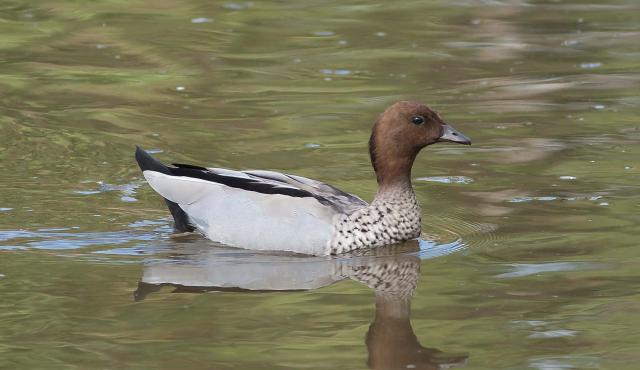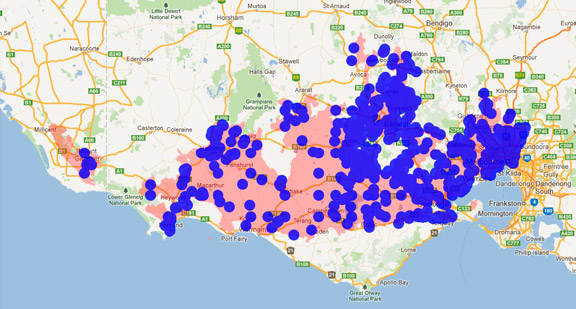A range of teacher professional learning programs will be developed to accompany the Biodiversity of the Western Volcanic Plains online outreach...

Australian Wood Duck
Chenonetta jubata
Forms monogamous breeding pairs that stay together all year round. Nests in tree hollows above or near water. Breeding season is from September through to November. Between 8 and 10 eggs are laid and incubation time is 28 days. Both parents feed the young. The young leave the nest after 57 days.
| Details | Description |
| Type | Bird |
| Group | Duck |
| Other Common Names | Maned Duck, Maned Goose |
| Identifying Characteristics | |
| Distinctive Markings | Speckled breast. |
| Diet | Omnivore. Grasses, clover and other herbs. Occasionally insects. |
| Habitat | Grasslands, open woodlands, wetlands, flooded pastures and along coasts in inlets and bays. Common in dams on farmland. Also frequent rice paddies, sewage ponds and urban parks. |
| Native Status | Native to Australia |
| Sounds | Females make a nasal "grouwwk", beginning low and rising. Males produce a higher, abrupt "now". |
| Taxonomy | |
| Phylum | Chordata |
| Class | Aves |
| Order | Anseriformes |
| Family | Anatidae |
| Genus | Chenonetta |
| Species | jubata |

Distribution maps indicate current and historic locations where species have been sighted.
Source: Atlas of Living Australia
| Conservation Status | |
| DEPI Advisory List | Not listed |
| FFG Act | Not listed |
| EPBC Act | Not listed |
The conservation status of species is listed within Victoria and Australia.
The Department of Environment and Primary Industry (DEPI) Advisory List consists of non-statutory advisory lists of rare or threatened flora and fauna within Victoria.
The Flora and Fauna Guarantee Act 1988 (FFG Act) lists threatened species in Victoria. Under the Act, an Action Statement is produced for each listed species.
The Environment Protection and Biodiversity Conservation Act 1999 (EPBC Act) is the Australian Government’s key piece of environmental legislation, listing nationally threatened native species and ecological communities.



